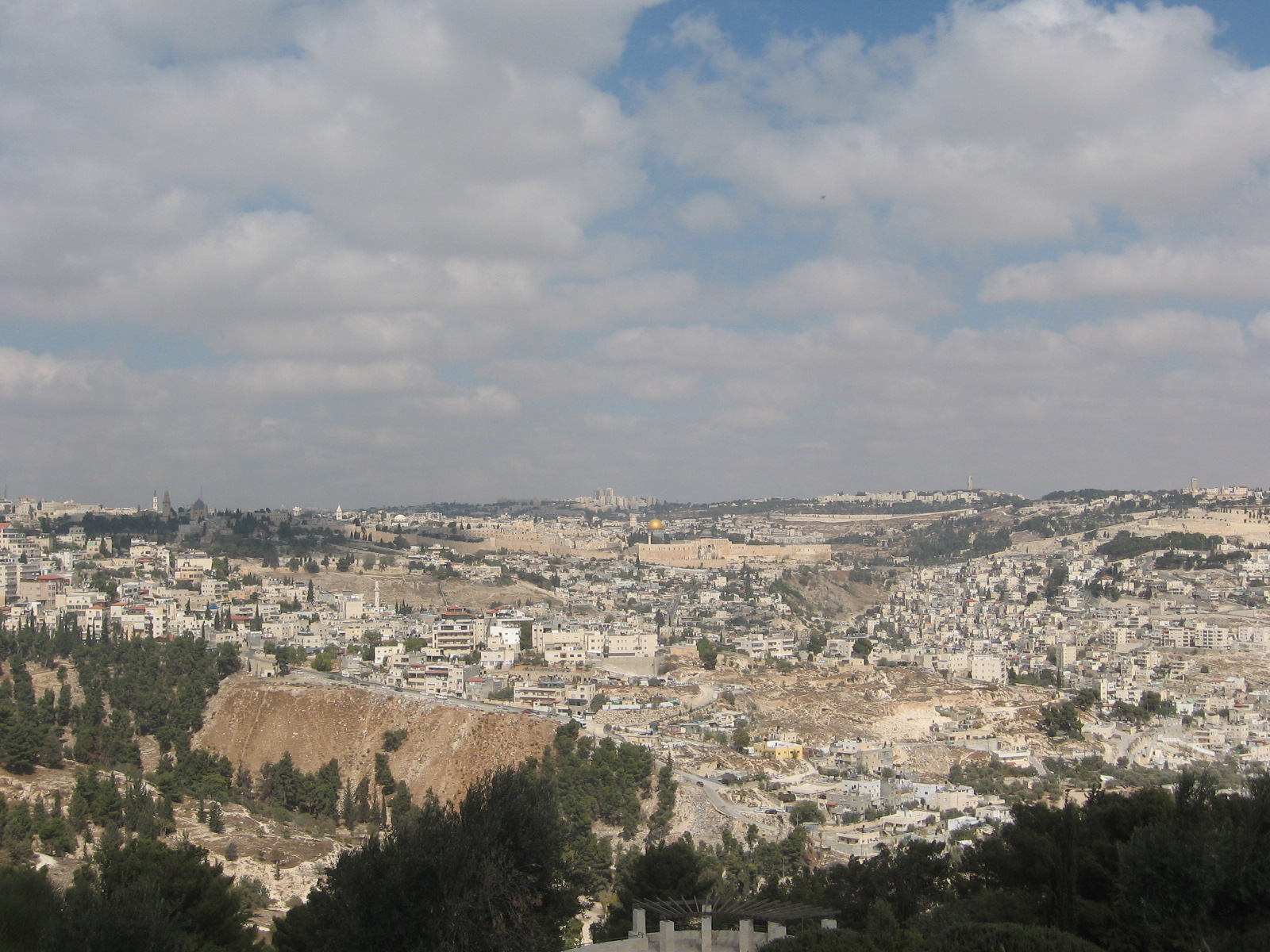Civilization
Israel’s Reasonable War Aims and Strategy
A political-science professor and military historian asserts Israel can disarm HAMAS and get its hostages back, but cannot annihilate HAMAS.

In “The Goals of the War in Gaza – and the Strategy for Achieving Them,” published by the Institute for National Security Studies in Tel Aviv, my friend Azar Gat provides an excellent guide to Israel’s internal national security debate. A Tel Aviv University political science professor and military history scholar, Gat sketches in unadorned terms Israel’s war aims and strategy. He also briskly evaluates the major doubts about the government’s plans and the leading alternatives. His compelling conclusion is that Israel’s principal objectives – destruction of Hamas’ military and governmental capabilities and liberation of the hostages – “are vital and can be achieved simultaneously.” Gat can insist on the unity of Israel’s goals because he understands them in context and tempers expectations in light of the harsh realities of Middle East politics in general and of Gaza in particular.
On Oct. 7, with Hamas jihadists rampaging through Israel’s southern border communities and perpetrating horrific war crimes, Prime Minister Benjamin Netanyahu proclaimed that Israel was at war. This reflected a decisive change in the Jewish state’s strategic orientation.
Since Hamas’ violent 2007 ouster of the Palestinian Authority from Gaza, the terrorist organization’s periodic rocket bombardments of Israeli civilians and civilian infrastructure prompted Israel to undertake several military incursions into Gaza to degrade Hamas’ capabilities and restore quiet. The jihadists’ Oct. 7 savagery shattered the comforting illusion – shared by Israel’s governing coalition and opposition, military experts, and people – that the Jewish state could live with Hamas ruling Gaza. To eliminate Hamas’ capacity to govern and wage war, Netanyahu’s war cabinet – joined by the opposition’s two most experienced national security figures – prepared a major ground offensive.
Initial domestic skepticism focused on the Israel Defense Forces’ ability to maneuver in Gaza’s tightly packed urban areas. Yet, writes Gat, “it has become clear, and not only to the surprise of the skeptics, that the IDF – both regular and reserve forces – is functioning at an extraordinary level through tight coordination, which may be unsurpassed by any other army in the world, among ground forces and the air force combined with other combat units and intelligence capabilities.”
Hamas’ ruthlessness and readiness provoked more skepticism. In flagrant violation of the international laws of war, the jihadists embedded their forces in cities. Only after the fighting had begun did Israel discover the intricacy, sophistication, and extent of the hundreds of miles of tunnels Hamas built under Gaza’s civilian population and the enormous quantity of munitions and other military equipment the terrorist organization had amassed. “And nevertheless, the IDF gained control over Gaza City and the northern Strip and broke the organized defense of Hamas’ battalions and its brigades in the field,” reports Gat, “and the IDF is close to a similar achievement – despite challenging conditions and the spreading public despondency in relation to the perceived ‘treading water’ – in Khan Yunis.”
While Palestinian casualties have been staggering owing to Hamas’ conversion of urban areas into battlefields, Israel’s successes have come with far fewer fallen Israeli soldiers – under 235 at mid-month when Gat’s analysis was published – than expected.
Critics in Israel, nevertheless, have advocated several alternatives to Israel’s ground campaign. Gat finds none of them persuasive.
Some proposed a comprehensive siege of Gaza that would within weeks or perhaps months compel Hamas to surrender or provoke Palestinians to topple the terrorists. But, Gat argues, “the world and in particular the United States will not allow the starvation of ‘the state of Gaza.’” Furthermore, to expect that “the people of Gaza could rise up and overthrow an organization as armed, fanatical, and determined as Hamas is no less a dream detached from reality.”
Others have advocated discrete, small-scale raids accompanied by air power targeting Hamas’ infrastructure. Given the jihadists’ substantial capabilities, Gat argues, surgical strikes without controlling territory would produce “an endless war of attrition, with the potential for no fewer casualties, a decline of Israeli morale, and a decisive moral victory for Hamas.” That approach would also guarantee the continuation of Hamas’ rocket fire while relinquishing the means to end it.
Others still seek the war’s immediate end. They maintain that Israel cannot achieve more than it already has, or it has achieved enough, and they generally favor aggressive efforts to secure a deal with Hamas to save the hostages.
Gat poses and answers the difficult question: “What possible deal, as a practical matter, is on the table, and to what is it possible and necessary to agree?” Israel’s war cabinet and a significant majority of the public are prepared to accept a ceasefire of a month or two in exchange for the hostages’ release. A deal of this sort, he believes, could free dozens of the surviving elderly among the approximately 130 whom Hamas has not released. However, Gat emphasizes, Hamas has persisted in demanding “a ceasing of the war – not the fighting.” That entails the IDF’s withdrawal from Gaza, Hamas’ return to power (even international guarantees of its wellbeing), and a captives deal of ‘everyone for everyone,’” which would require Israel to release thousands of hardened jihadists.
Striking a deal “at any price,” which means acquiescing to Hamas’ outrageous conditions, would bring about a “crushing national defeat,” states Gat. “It is necessary to make a supreme effort and be ready to pay a high price to rescue as many hostages as possible, but Israel’s surrender on existential questions is not an option.”
Such a surrender would reverberate to Israel’s great detriment throughout the Middle East. “The Palestinians and Arab public opinion – inclined, in any case, to the ‘axis of resistance’ – will back Hamas” while “Israel’s potential allies in the Arab Middle East will be compelled to silence themselves and draw back,” maintains Gat. Hamas will reassert control, rearm, rebuild military infrastructure, and renew indiscriminate rocket attacks on Israeli civilian populations. Having sustained heartbreaking losses with nothing to show for it, Israel will be ill disposed to mobilize again for war against Hamas. And the United States will be decidedly less inclined to green-light another round of devastating urban warfare.
The biggest cost to Israel, emphasizes Gat, would be the destruction of its deterrence – that is, the perception that it can and will strike swiftly and decisively. Hamas will have proved itself able to survive a concerted Israeli offensive and willing to subject Gazans to massive collateral damage. What would deter Hamas in the future from attacking Israel? What would deter Hezbollah and other regional jihadists from redoubling their fortifications in towns and cities and stockpiling arms for deadlier assaults on Israel’s civilian population?
Without the deterrence that has served as a cornerstone of the nation’s strategic culture since the country’s birth in 1948, Israel will lose the long periods of relative peace and quiet that have allowed it to build a flourishing society in a dangerous neighborhood. Instead, it will face a draining and debilitating multi-front war against an array of Iranian-backed Islamists seeking its utter destruction.
This constellation of costs, culminating with the withering of its deterrence, “is the source of the deep and justified feeling in Israel that the war in Gaza is an existential war,” writes Gat.
“What is the ‘victory’ that Israel can realistically achieve in the war against Hamas,” Gat asks, “and what apparently will not be possible to achieve?” Undistracted by Netanyahu’s damaging political slogan of “absolute victory,” Gat asserts that Israel can destroy Hamas’ military leadership, fighting forces, and infrastructure and thwart its reemergence as Gaza’s dominant power. This includes dismantling key nodes of Hamas’ vast tunnel network – “munitions workshops, weapons and food stockpiles, and command and control centers” along with the energy sources that power communications, lighting, and ventilation. Israel can also correct what Gat regards as the nation’s only strategic error since Oct. 7 by establishing control over the Philadelphi Corridor on Gaza’s Egyptian border, through which Hamas has smuggled immense amounts of materials crucial to its military operations.
Hamas’ total elimination, however, is not attainable. Following Israel’s ground campaign, Gat argues, Hamas will continue to live in many Gazans’ hearts. It will persist as a guerilla force. From time to time, the jihadists will launch volleys of rockets into Israel. But Israel will no longer be threatened by tens of thousands of entrenched jihadists possessing tens of thousands of rockets.
Unfortunately, battlefield success will not translate into a political solution for what ails Gaza. Despite its manifest flaws, the least awful option for “the day after” involves Israel maintaining overall security responsibility for Gaza. Moderate Gulf Arabs, the United States, and Europe must cooperate in reconstructing the war-torn territory. And Gaza should be administered by an “upgraded Palestinian Authority” that, like the PA in Judea and Samaria, enables Israeli forces to maneuver adroitly as needed against Hamas terrorists.
This astringent conclusion is not for want of imagination or empathy. To the contrary, it takes seriously local hearts and minds and reckons with the region’s baleful geopolitical exigencies. In the Middle East, writes Gat, “there exist only bad options and much worse ones.”
What is true of the Middle East is especially true of Gaza.
This article was originally published by RealClearPolitics and made available via RealClearWire.
Peter Berkowitz is the Tad and Dianne Taube senior fellow at the Hoover Institution, Stanford University. From 2019 to 2021, he served as director of the Policy Planning Staff at the U.S. State Department.
-

 Civilization2 days ago
Civilization2 days agoDC Pipe Bomb Arrest Raises Questions About Christopher’s Wray’s FBI
-

 Guest Columns4 days ago
Guest Columns4 days agoCongressional Leaders See Far Higher Stock Returns Than Peers
-

 Civilization3 days ago
Civilization3 days agoThe Legal Logic Behind U.S. Operations Against Narco-Terrorist Networks
-

 Civilization4 days ago
Civilization4 days agoHow Trump Changed America
-

 Executive3 days ago
Executive3 days agoNewsom’s ‘National Model’ for Homeless Wracked by Fraud
-

 Executive2 days ago
Executive2 days agoWhen You’re in a Hole, Stop Digging
-

 Education2 days ago
Education2 days agoWaste of the Day: Taxpayers Subsidize Football Coach Severance
-

 Civilization1 day ago
Civilization1 day agoPence Calls on Trump To Fire RFK Jr Over Abortion Drug














